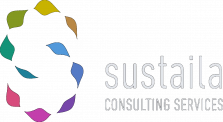
EU Proposal on establishing a framework of measures for strengthening Europe’s net-zero technology products manufacturing ecosystem (Net Zero Industry Act)
In March 2023, the Proposal on the Net Zero Industry Act was published. If adopted, it will apply to net-zero technologies (renewable energy technologies). The Act aims to set up the framework of measures for innovating and scaling up the manufacturing capacity of net-zero technologies in order to support the EU’s greenhouse gas emission and climate neutrality targets. The Act also aims to ensure the EU’s access to a secure and sustainable supply of net-zero technologies.
The Act will determine measures to ensure that by 2030, the manufacturing capacity in the EU of the strategic net-zero technologies listed in the Annex to the proposed Act approaches or reaches at least 40% of the EU’s annual deployment needs. This strategic technologies include solar photovoltaic and solar thermal technologies; onshore wind and offshore renewable technologies; battery/storage technologies; heat pumps and geothermal energy technologies; electrolysers and fuel cells; sustainable biogas/biomethane technologies; carbon capture and storage technologies, and grid technologies.
Adopted EU Proposal for a Directive on Corporate Sustainability Due Diligence
Once the Directive enters into force, companies will be required to i.e. integrate due diligence in policies; identify actual or potential adverse human rights and environmental impacts; prevent or mitigate potential impacts; monitor the effectiveness of the due diligence policy and measures as well as communicate on due diligence publicly. The Directive will impact both EU and non-EU countries including as follows:
- EU companies:
- Group 1: all EU limited liability companies of substantial size and economic power (with 500+ employees and EUR 150 million+ in net turnover worldwide).
- Group 2: Other limited liability companies operating in defined high impact sectors, which do not meet both Group 1 thresholds, but have more than 250 employees and a net turnover of EUR 40 million worldwide and more. For these companies, rules will start to apply 2 years later than for group 1.
Non-EU companies: active in the EU with turnover threshold aligned with Group 1 and 2, generated in the EU.
Adopted EU Corporate Sustainability Reporting Directive (CSRD) will impact both EU and non-EU companies
The Directive adopted on 28 November 2022 introduces more detailed reporting requirements than the Non-Financial Reporting Directive (NFRD) that it amends. It is estimated to impact around 50,000 companies. Companies will be required to disclose sustainability information in their management report according to mandatory European sustainability reporting standards. It will impact:
- Companies subject to the EU Non-Financial Reporting Directive (NFRD) e.g. EU credit institutions and EU insurance companies with more than 500 employees;
- Large EU companies: EU companies complying with two of the following: balance sheet total exceeding EUR 20 million or net turnover exceeding EUR 40 million or more than 250 employees.
- EU and non-EU companies with securities listed on EU regulated markets e.g. EU and non-EU companies (excluding micro-enterprises) with securities.
- Non-EU companies with a net turnover of more than EUR 150 million in the EU and an EU branch or subsidiary.
The implementation date differs. For example, for large companies that are not currently subject to the NFRD: reporting will have to be in 2026 with regard to the financial year 2025; for third-country undertakings with net turnover above 150 million in the EU if they have at least one subsidiary or branch in the EU exceeding certain thresholds: reporting will have to be in 2029 with regard to the financial year 2028.
ECHA proposed an EU-wide restriction on all per- and polyfluoroalkyl substances (PFASs) in firefighting foams
On 23 February 2022, the European Chemicals Agency (ECHA) proposed for an EU-wide restriction on all per- and polyfluoroalkyl substances (PFASs) in firefighting foams. The restriction aims to protect the environmet and human health.
ECHA invites comments on its proposal to include 8 substances of very high concern in the REACH Authorisation List
ECHA considers recommending 8 new substances for the European Commission to include in the Authorisation List (Annex XIV to REACH). If a substance is included in the Authorisation List, it can only be placed on the market or used after a given date if an authorisation is granted for a specific use. Companies that are using, manufacturing or importing these substances can apply for authorisation. The substances include ethylenediamine, lead and glutaral. Comments can be submitted by 2 May 2022.
EU REACH: Four hazardous chemicals added to the Candidate List of substances of very high concern
On 17 January 2022, the substances with the following CAS numbers 119-47-1; 1067-53-4; 255881-94-8 and ”(±)-1,7,7-trimethyl-3-[(4-methylphenyl)methylene]bicyclo[2.2.1]heptan-2-one covering any of the individual isomers and/or combinations thereof (4-MBC)” have been added to the Candidate List of Substances of Very High Concern.
Under the EU REACH Regulation, companies must comply with the legal obligations if they use any substances that is included, either on its own, in mixtures or in articles, in the Candidate List. The List includes now 223 entries.
Published non-binding Guidelines Regarding Directive Safety and Health Signs at Work (92/58/EEC)
On 26 January 2022, the non-binding Guidelines Regarding Directive Safety and Health Signs at Work were published. The guidelines aim to clarify different legal aspects of Directive 92/58/EEC and to define the minimum requirements concerning health and safety signboards. Moreover, they describe obligations of employers with regard to safety and health signaling.
